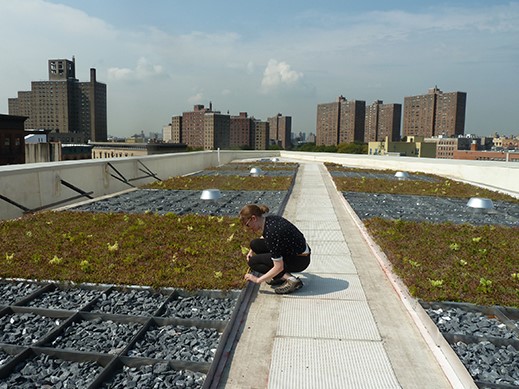
Blue Roof
Asset Type : Engineered
Water Classification:
Stormwater
Combined Sewer Overflows
Stormwater
Combined Sewer Overflows
Construction Rank :
3
O&M Rank :
3
How it Works : Blue roofs have several detention ponds which collect storm water, temporarily stores it, and then releases it slowly when the rain has stopped.
O&M Required : Inspect outlet structures, and storage areas for trash and sediment accumulation: Monthly for the first year after installation to determine ongoing maintenance frequency. Remove debris from drainage outlets and outlet screens to prevent clogging. Remove debris from secondary drainage/overflows. Remove excessive buildup of sediment around the outlet controls or within the storage cells. Inspect for leaks. Break up ice formation around outlets and overflows.
Design Considerations : Have an engineer verify that your building and roof can support the weight of the water being stored. Standing water can attract mosquitoes. The membrane might leak or be punctured.
Costs : In most cases, blue roofs are significantly less expensive than green roofs, often coming in at under $1 per square foot.
Benefits : Blue roofs slow storm water. When a blue roof is combined with light-colored roofing materials, a blue roof can significantly reduce a building’s cooling costs. In addition, some systems spray the stored water back on the roof in a controlled fashion, providing even more cooling. Some buildings can also utilize the stored water in landscaping or in areas where green roofing is being used. Others use the collected water for recreational purpose, such as cooling a roof’s walkways or providing water for fountains.
References:
Image by: Hazen and Sawyer via https://www.hazenandsawyer.com/news/pioneering-blue-and-green-roof-improves-the-health-of-the-east-river-create/